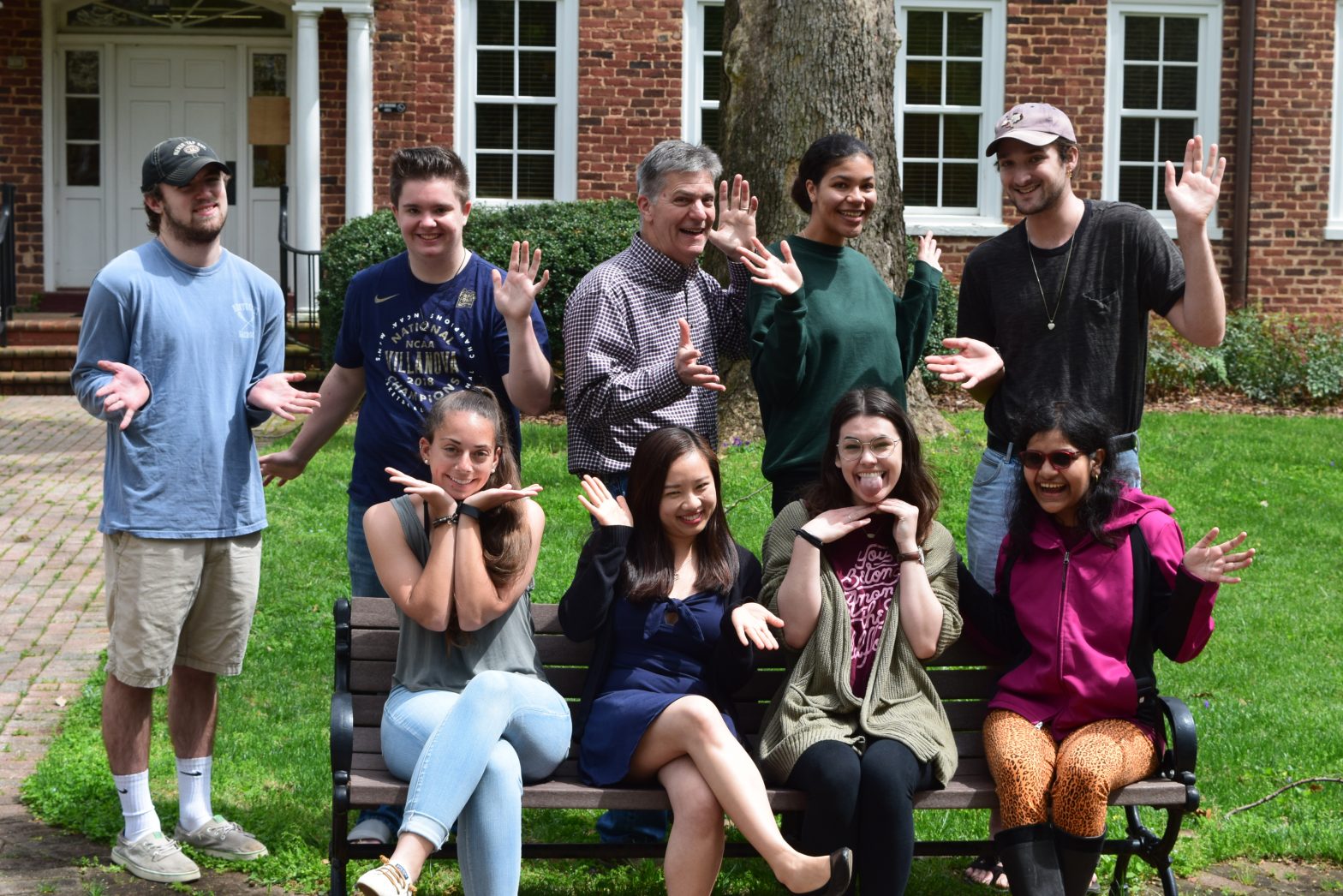“Ethics does not solve problems, it structures them,” writes literary critic Geoffrey Harpham. With the help of theorists like Harpham, Iris Murdoch, Richard Rorty, John Guillory, Michael Eskin, Emmanuel Levinas, Michel Foucault, and others, our course has explored the intersection between the literary and the ethical, focusing on a key distinction between ethics—the matrix in which we consider choice between competing goods—and morality, the act of choosing one thing instead of the other possibilities. We have wondered if literature is distinctively suited to engage us in ethical consideration: whether by allowing us to experience imaginatively characters’ personal decision-making over against conventional morality, by holding up to us the mirror of critical self-assessment, or by bringing us face to face with the claims of the other. We have felt literature foster our own empathy. And we have noted, with Harpham, that the link between ethics and literature “is notoriously difficult to describe.” These presentations confront that challenge.
Presenters
Caleb Amstutz ’19

Caleb Amstutz is a senior at Guilford College, majoring in English and Biology. Caleb was a member of the Guilford men’s cross country and track & field teams for three years. He is currently a member of Biohazard Ultimate Frisbee. Caleb studied abroad in Bocas del Toro, Panama where he learned about tropical ecology and environmental tourism. Caleb recently defended his senior honors thesis, “Impacts of Hurricanes on Fish Biodiversity in St. John, USVI,” where he received departmental honors in biology. Caleb loves to overanalyze movies and television shows, get purposefully lost in the woods, or embark on spontaneous adventures.
“Fractured Faces: Consumption of the Other in Toni Morrison’s Beloved”
In literary texts, the lingering presence of psychological hauntings can emerge through repressed trauma or unspoken concerns. Toni Morrison’s Beloved establishes how unresolved mental imprisonment can trigger the insatiable consumption of the perceived Other. Emmanuel Levinas believes that the ethical self emerges when it becomes aware of a life external to its own through the presence of an Other; in a sense, accepting an invitation into infinity (Alford 26). However, if the self rips “[the] face away” from the Other (Morrison 251), their ability to structure any positive connections outside of themselves is destabilized. The maternal relationship between Sethe and Beloved illustrates how under the constraints of slavery, even the most intimate of connections to the Other is warped and fragmented. Both mother and child destructively devour their respective Other in an attempt to reconcile their broken ‘selves’. As such, Beloved ultimately breaks the spell of this ‘consumptive Other’ by unmasking ‘their face’ and redefining the ethical self through a restoration of communal values.
Billy Bauhof ’19
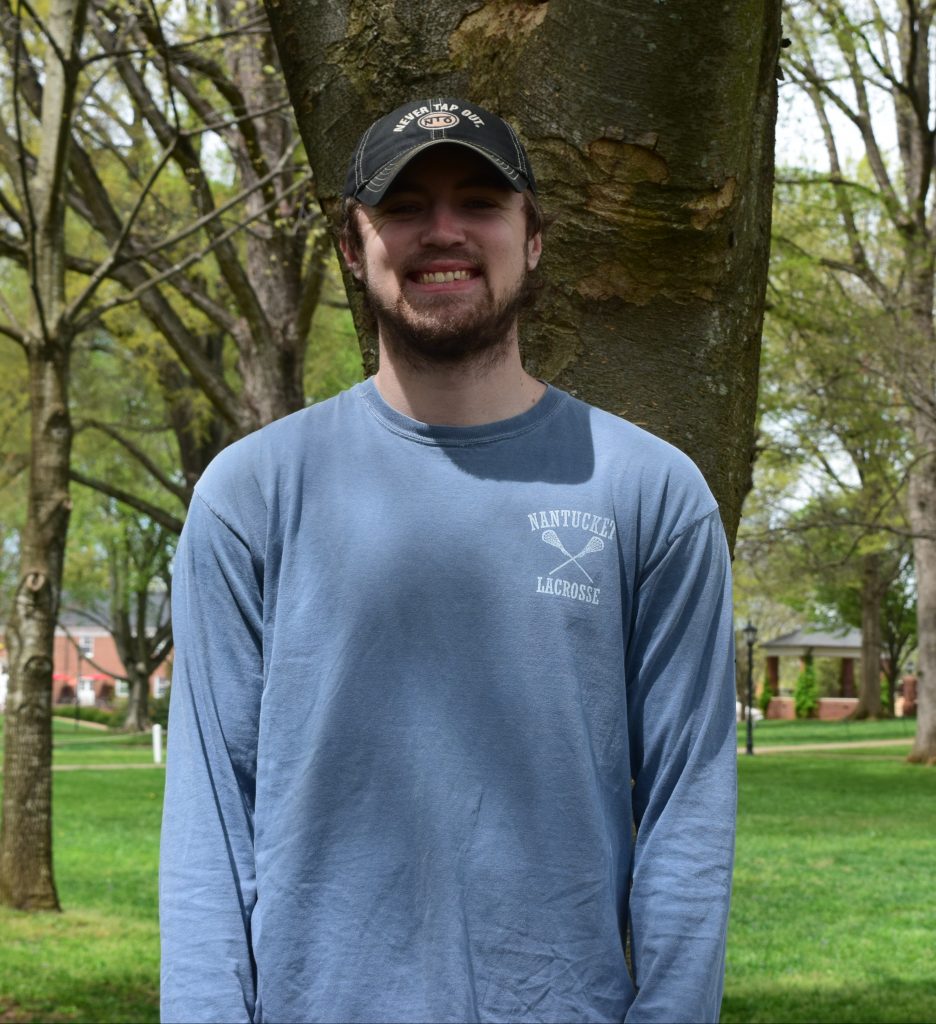
William “Billy” Bauhof is a senior at Guilford College. His major is English with a minor in Japanese Language and Society. He studied abroad at Kansai Gaidai University in Osaka, Japan during the fall semester of 2017, feeding his ever-growing interest in foreign cultures. He is an avid sports fan, particularly enjoying soccer and lacrosse, as well as a plethora of different music genres. He enjoys reading and discussing literature, and is considering continuing on to law school, or some other path that piques his interest.
“How Humans Ought to Live: The Negatives of Cloning and the Tissue Economy in Never Let Me Go”
Kazuo Ishiguro’s Never Let Me Go focuses on many different themes; two of the most prominent ones are cloning and the tissue economy. Both are not particularly openly portrayed in a negative light within the context of the story, but there are unspoken issues that arise. “How one ought to live,” one of Harpham’s major ethical points of discussion, helps to analyze these themes in a manner that will bring to light how and why the cloning system and tissue economy go against how humans ought to live. Subjecting the clones to isolation, discrimination, and practically brainwashing are just a few examples of how the humans in this story go against any sort of possible moral principles that would make these presented themes fall under the argument that this is “how humans ought to live.”
Hannah Cohen ’19
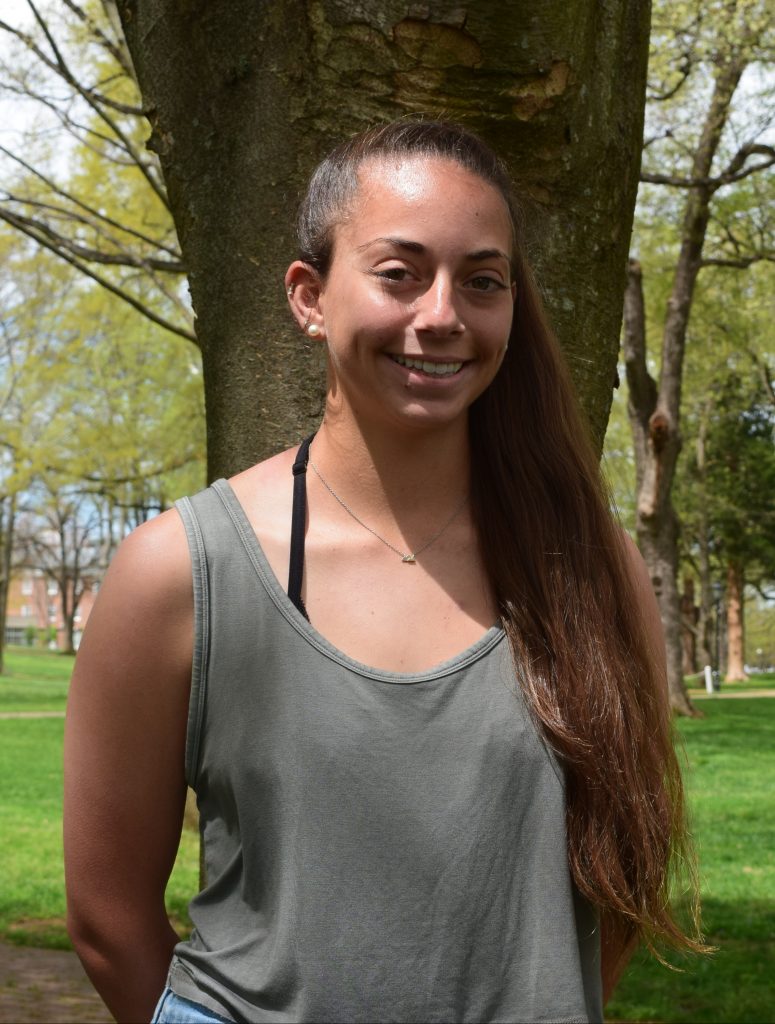
Hannah Cohen is a senior at Guilford College from Baltimore, Maryland. She is double majoring in English and Secondary Education with a minor in Psychology. Hannah is a member of the Guilford women’s lacrosse team. Outside of class she likes to binge-watch Friends and Facetime
with her dogs.
“Blinded by Love, Fueled by Jealousy, Sparked by Revenge: A look into the Ethical Dilemma that is Othello”
What makes a person good or evil? Is it as simple as being good or evil? Shakespeare’s Othello tells us no. Through Geoffrey Harpham’s essay, “Ethics,” we can see that literature helps to articulate perplexity. There is no play more perplexing than Othello. Othello’s characters challenge our views of the world, challenge our views of the characters and in turn challenge our views of ourselves. By looking at the prominent characters in Othello (Othello, Iago, Desdemona, Cassio, Emilia, and Roderigo), we can start to see the way the characters interact and work with and against each other. Their failings and successes contribute to creating the spiderweb that is our own thoughts and feelings about good and evil both within and around us.
Finn Conte

Finn Conte is a junior at Guilford. He is an English major and creative writing minor and was born and raised outside of Philadelphia, Pennsylvania. Finn hopes to work in the editing, publishing, or creative writing field after graduation, but first he has one more year at Guilford.
“The Ethics of Sexuality inThe Handmaid’s Tale”
In this analysis I have attempted to use Geoffrey Harpham’s “Ethics” as a lens to understand specific dynamics of female sexuality within Margaret Atwood’s 1986 novel The Handmaid’s Tale. I have provided a brief overview of Harpham’s essay, with a specific focus on the difference between his definition of “morality” and “ethics.”
Overall I am arguing there are three main points through which Atwood portrays female sexuality as an “ethical” dynamic: consent or lack thereof, self-expression through dress, and construction of sympathy in the characters seen as “gender traitors.” Atwood uses these elements in order to encourage readers to confront what Harpham might call the “is” and the “ought,” as well as to portray the general horrors of a society that has forsaken the autonomy and well-being of half of the population. Dystopian literature makes a fantastic “sandbox” in which to explore ethical questions and serves well as a method to engage in what Harpham calls “obsessive questioning… where the answers promised have no answer(s).”
McKinley Keener ’19

McKinley Keener is an English major double minoring in film and European history. She does freelance writing, editing, and proofreading on the side. One time she saw Anne Carson read in person and cried. Her other inspirations include Hanya Yanagihara, Richard Siken, David Sedaris, and Richard Brody. When she’s not at school, you can find her at the movie theater or a museum.
“Trauma before the Traumatic: The Ethics of Witness in Arundhati Roy’s The God of Small Things“
A popular trend in literature is the traumatic narrative, which allows readers to experience the emotional distress of its characters. In The God of Small Things, readers feel the trauma of Estha, Rahel, and Ammu in particular. Through Roy’s use of the traumatic narrative, readers are asked to empathize with them and understand their suffering without yet understanding the causes of their suffering. By witnessing their trauma, readers see Estha, Rahel, and Ammu as “fellow sufferers,” imagining their “pain and humiliation” is really the readers’ own. Using Richard Rorty’s concept of creating “solidarity” with other human beings, this paper argues that Roy encourages an ethical reading of The God of Small Things by making readers witness the trauma of the characters before they witness the precipitating traumatic events.
Ramya Krishna ’20

Ramya Krishna is a junior at Guilford College, from Durham, North Carolina, double majoring in Creative Writing and Psychology, with a minor in Education Studies. She is a violinist in the Guilford College String Ensemble, German Polka Band, and in the Greensboro Philharmonia, where she also serves as Recording Secretary for the Board. Along with her academics, Ramya enjoys hosting her 6-8AM radio show on WQFS-90.9, sharing information and resources with people, and engaging in wordplay wherever she goes! Following graduation from Guilford, she aspires to go to law school.
Bioethics and Constructing the World of the “Other” in Never Let Me Go
In any society, an other is an individual or individuals who differ from the normative requirements of that particular society. How otherness is constructed within a society determines how individuals are treated within that society, and in Kazuo Ishiguro’s Never Let Me Go, the main characters Ruth, Tommy, and Kathy H.’s status as clones is reinforced and maintained through both language and how they are treated by their guardians and the medical establishment. This presentation will explore how Ishiguro constructs otherness in Never Let Me Go using the ethical theories of Richard Rorty and Emmanuel Levinas, as well as bioethical frameworks, and thus, prevents it from being overcome.
Joseph Patterson ’20
Joseph is an English major with a double minor in Spanish and Religious Studies. He is Co-Editor-in-Chief of the campus literary magazine, The Greenleaf Review, and hopes to pursue creative publication in his career. He enjoys small animals and hopes to one day write a Game of Thrones-esque screenplay about bee colonies.
“Navigating Morality and Representation in The Handmaid’s Tale”
Geoffrey Harpham describes literature as “showing motivations, revealing the ends of action, holding the mirror up to the community and the individual so they can judge themselves.” In this way, it is ethically beneficial— it prompts the reader to identify with the narrative and therefore consider the ethical dilemmas proposed.
In The Handmaid’s Tale, Margaret Atwood offers the reader this societal mirror. This paper closely analyzes the novel through the moral philosophic lens of Iris Murdoch, with reference to Michael Eskin’s theory of “capaciousness” (i.e. the reader’s ability to identify with the text). I discuss how Atwood manipulates the narrative in order to provide a realistic, and perhaps cautionary, examination of gender, love, ego, identity, and religion.
Gillian Sherman ’19

Gillian is a Senior English and Media Studies major with a minor in Film Studies. In her spare time, you can often find her sitting outside on campus, watching movies, or eating dessert of some kind (usually ice cream). Later this year she’ll attend Bank Street Graduate School in New York City to pursue a Master’s degree in Special Education.
“Challenging Love, Control, and Choice in The Handmaid’s Tale“
What makes a life morally correct or ethically sound? Is there one right, true way to live? These questions are challenged in Margaret Atwood’s The Handmaid’s Tale and examined through the multiple different lenses and topics. Asking Geoffrey Harpham’s theoretical question, “how one ought to live?”, and focusing on the themes of limited bodily control, the restriction of voice and identity, as well as challenging the overall definition of love, it becomes clear that the world Atwood creates is evidently not a world we should strive for. Following the protagonist, Offred, audiences are able to quickly infer that the life she must navigate within the dystopian and oppressive society of Gilead is one that loudly echoes the questions of Harpham. Atwood masterfully creates a world in which audiences are forced to reevaluate the ways of life in Gilead, while also reminding us to be cognizant of our evolving society to ensure that we never end up with a mirrored reflection of Gilead.
Primary Texts
The Handmaid’s Tale
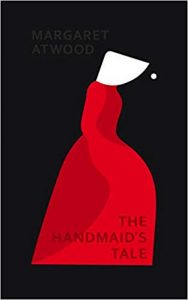
by Margaret Atwood
Margaret Atwood’s The Handmaid’s Tale follows Offred as she is forced to navigate the fictional dictatorial society of Gilead. After the Republic of Gilead overthrows the United States government, women are stripped of their names, identities and voice, as well as lose control of their bodies to the watching Eyes, which serve as the secret police of Gilead. Through the use of a double narrative, Offred tells audiences of her life prior to Gilead where she once lived with her husband, Luke, and daughter, compared to the present where she now lives with her Commander and his wife, Serena Joy. This notable narrative allows Offred to eerily demonstrate the skewed vision of Gilead and how the detrimental effects of government control of women in a manner such as this can have a detrimental effect on all of society. As the novel progresses, it becomes clear that Offred must choose between assimilating to this oppressive Gilead regime, or defying the societal standards as a means of survival.
Never Let Me Go
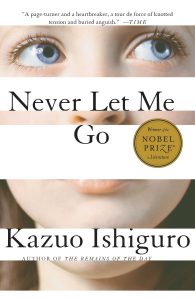
by Kazuo Ishiguro
Never Let Me Go is a speculative fiction novel centered around cloning and the ethics of control. (Unreliably) narrated by Kathy H, and closely focusing on her friends Ruth and Tommy, the reader learns of the life of a clone whose sole purpose in life is to “donate” organs to non-clone humans. The novel invites a close analysis of control, self, and identity, Ishiguro prompting a preferential examination of what is not said over what is.
Beloved
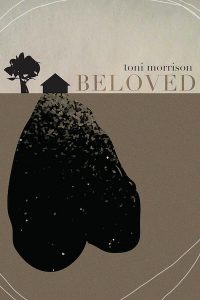
by Toni Morrison
Toni Morrison’s Beloved is a novel examining the destructive legacy of slavery through the eyes of Sethe, a former slave who escaped from her malicious owners to the free state of Ohio. Based on true story of Margaret Garner, Beloved details how Sethe’s self-identity has become corrupted as a result of her harrowing experiences under bondage that linger within the stillness of her soul. Isolated with her daughter Denver in a solitary house in Cincinnati, Sethe has been unable to confront any of her past trauma. But when a strange woman calling herself Beloved appears on the front porch, Sethe’s past life collides with her present and unearths a suppressed narrative of love, maternal bonds, memory, and identity. Only through evaluating herself in relation to the greater African-American community can Sethe reclaim her future and her selfhood as a mother.
The God of Small Things

by Arundhati Roy
The God of Small Things, published in 1997, is Indian writer Arundhati Roy’s first novel. It follows the experiences of two twins, Estha and Rahel, and their extended family in Kerala, India in 1969. When the twins’ English cousin, Sophie Mol, comes to visit, terrible events leading up to and following her death traumatize Estha and Rahel permanently. Told partly in 1969 and partly in 1992, the novel depicts how the twins and the people around them are still affected by this trauma twenty-three years later. The God of Small Things tackles the topics of family, forbidden love, and political corruption, showing how even seemingly small things can have big impacts.
Othello
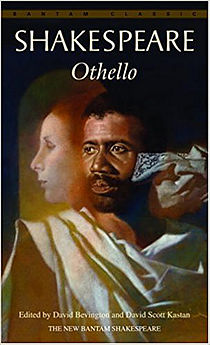
by William Shakespeare
The play is about Othello (The Moor) who is a prominent general in the Venetian army. He promotes an educated, though inexperienced in battle, man, Cassio, to be his lieutenant over the more battle-hardened Iago. The promotion fuels Iago’s hate towards Othello especially coupled with the rumors that Othello has slept with Iago’s wife, Emilia. Iago manipulates Roderigo, a former suitor to Desdemona, to wage psychological warfare on Othello and ruin Othello’s life. Iago plants the seed that Othello’s wife, Desdemona, is cheating on Othello and through strategic planning and well-thought out manipulation is able to bring down everyone in Iago’s path. Iago’s revenge destroys all those in his path including his wife who he kills when she attempts to share his heinous acts with the world. The end of the play shows the audience a stage littered with corpses, but Iago is standing bloody and wounded but alive.
Theorists
Geoffrey Galt Harpham

Harpham (1946- ) is an American Humanities academic who is currently a senior fellow at the Kenan Institute at Duke University. For many years, Harpham has served as President and Director of the National Humanities Center.
Harpham is widely known for encouraging the interlinking of the study of Humanities with the studies of Natural and Social Sciences. He is an accomplished writer of scholarly material, as he has 10 books credited to his name, Shadows of Ethics (Duke University Press, 1999), A Glossary of Literary Terms (2005) and The Character of Criticism (Routledge Press, 2006), just to name a few.
This semester, one of our focuses was an essay written by Harpham entitled “Ethics,” with the main points being concepts such as the “subject of humanism” the “traditional concept of the self” and the “moral law” (Harpham 387). As a class that focused on exploring these and other key concepts along with the novels Never Let Me Go, Othello, Beloved, The Handmaid’s Tale, and The God of Small Things, we used Harpham’s approaches to help us further understand the moral codes of humans and how we as humans determine how one’s individual moral code influences how they as a human ought to live.
Iris Murdoch

Iris Murdoch (1919-1999) was a British novelist and philosopher. She focused on the ideas of good and evil; she challenged people’s preconceived notions about good and evil. She wrote against ideas of traditional behaviorists and believed that moral action does not need to be observable, but it can happen subconsciously.
In this course, we read her book The Sovereignty of God, which is comprised of three essays she published: “The Idea of Perfection,” “On ‘God’ and ‘Good,'” and “The Sovereignty of Good Over Other Concepts.” Her main focus throughout these essays is a rejection of the philosophical account of morality that already exists and changing that to be a “moral reality external to ourselves” (Broackes). We used this treatise to understand our own views of morality and how literature can combat selfishness.
Richard Rorty

Richard Rorty (October 4, 1931 – June 8, 2007) was an American philosopher best known for his critiques of certainty and absolute truth. He is best known from his works Philosophy and the Mirror of Nature; Contingency, Irony, and Solidarity; and Achieving Our Country.
In this class, we studied the introduction and chapter “Solidarity” from Contingency, Irony, and Solidarity. The most important takeaways from those readings is how we can erase the idea of “them” by finding common ground with others vastly different than ourselves through pain and humiliation. One of Rorty’s most important points in this piece is that solidarity with others is not something that already exists because we share the common thread of being human. It must be something that we create by recognizing that we share the common thread of suffering.
Emmanuel Levinas
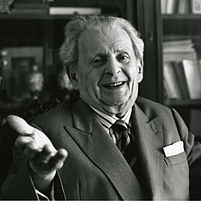
Emmanuel Levinas (1906-1995) was a 20th century French philosopher and ethical theorist. Levinas studied philosophy at the University of Strasbourg and later went to the University of Freiburg to study phenomenology. He served in the French army during World War II, where he was captured in 1940 and held as a prisoner of war in a concentration camp near Hannover, Germany. Much of Levinas’ distinctive philosophical understandings emerged from his time during the war, noted especially in his first book-length essay, Totality and Infinity ,published in 1961. Levinas was fascinated with the concept of the Other, another human being with differences from the self and critical in the development of self-image.
For Levinas, the Other is not knowable until the self experiences an intimate encounter with the face. Prior to encountering the Other, Levinas believes that one cannot conceptualize the meaning of unlimited possibility. Merely recognizing the concreteness of another person shatters the subconscious drive towards totality, and repurposes self-focus into outward investments, a motion that Levinas believes makes the world truly real (87). Ultimately, Levinas establishes that by recognizing that the world developed by the self also belongs to the Other, we necessitate an ethical obligation toward that Other. The purpose of the self is to carry the weight and responsibility for the Other as if it were their own.
